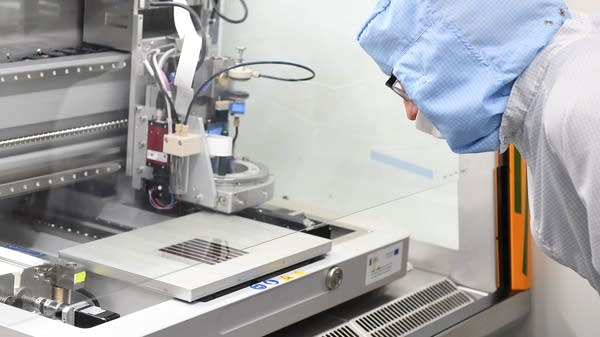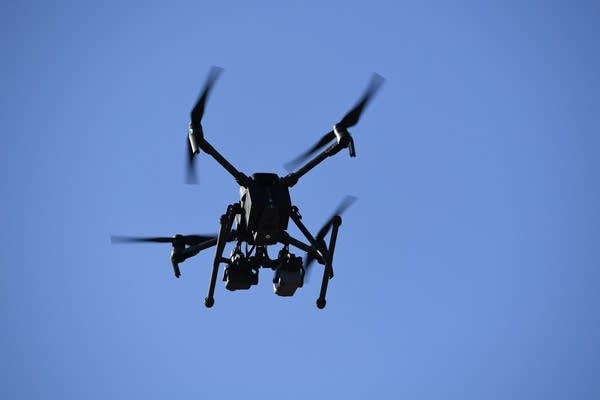The trade war is having a sort of chilling effect on the export of sensitive tech, like AI chips and drones.

U.S. companies export tens of billions of dollars in sensitive technology every year — artificial intelligence computer chips, drones or encryption software. Companies have to apply for licences to make those sales, and although approvals have dropped in recent years, rejections have risen.
Still, in 2018, U.S. firms got approval from the Commerce Department to export more than $64 billion worth of technologies that could have some military purpose.
I spoke with Matt Drange, an investigative reporter at The Information. He sifted through the data to see what it can tell us about tech trade. The following is an edited transcript of our conversation.
Matt Drange: While there is a spike in these denials, it’s a relatively small amount. Just to give you an idea, there are more than 6,000 individual items approved for export, just last year in 2018, and there were only about 150 denials. The denials, while they are on the rise, they still account for a relatively small amount. What experts who’ve looked at this data for us said, essentially, is that this is really showing the chilling effect that some companies are having, or experiencing, rather, when it comes to “Hey, I’d like to do business with my trade partner, ZT, or Huawei, or companies like that.” In some cases [they] aren’t able to do that, so they’ve even denied some items that companies have shipped in prior years to China, [and they] are now being denied where they were approved two, three, four years ago.
Jack Stewart: Is it clear whether that’s due to security concerns or due to the trade war?
Drange: It appears to be the trade war. There are very specific items. There’s a broad category of semiconductors, for example, that is at the heart of China’s “Made in 2025” plan. The export of those items, for example, is one case where it appears very clearly to be the trade war that is slowing these down. The other thing to note, too, is that the Bureau of Industry and Security, the agency that deals with these, they’re taking longer to process these applications. The attorneys who work with companies to export this technology are telling us that, “Hey, it used to take two, three months to get this approved. Now it’s taking upwards of six months to a year even in some cases.”
Stewart: The Trump administration is also looking to redefine some of these rules around what sensitive technology is and how it gets exported. Is that likely to have an effect in the future on these numbers?
Drange: Absolutely. It’s a great point, and it certainly will — so more technology than even we have here in this data set, which has tens of thousands of rows of data. There’s going to be more technology subject to export regulations soon as the Trump administration works to define so-called critical emerging technology. That could be everything from AI to machine-learning software to 3D printing to quantum computing — a whole range of technologies that will affect a lot of companies that right now don’t have to worry about export controls and whether or not they can ship a product anywhere. Soon, potentially as soon as next year, those companies will have to worry about that and apply to export that technology.

How The Information got a hold of this data is quite interesting, as well. Journalists filed Freedom of Information Act requests with the administration and made the entire dataset available to download.
Or if you prefer, they’ve also made it more digestible with an interactive map. Click on a category — say, encryption — then a country — say, Germany — and see that it’s top of 2018’s list with 46 approved applications totaling $67.5 million.
The decision of what is sensitive falls to the Bureau of Industry and Security, part of the U.S. Department of Commerce. If you’d really like to go deep, here’s the link where you can delve down into the Commerce Control List.
I mentioned that the Trump administration is looking to change the rules around sensitive technology. The Brookings Institution, a D.C. think tank, has a piece on its website from last year, when the review of the rules was announced. It delves into the definition of dual use technologies — tech that can have military and civilian uses. It suggested image recognition can be used for social networking, but…also for surveillance and targeting, for example. It asks how can sensitive technologies be developed without constricting their development?
The China Business Review has a look at what industry is saying about restrictions, and what commenters on the proposed rules say about operational issues. For example, they say global companies will still need to be capable of internal collaboration and research and development. It just shows the complexity of global trade.